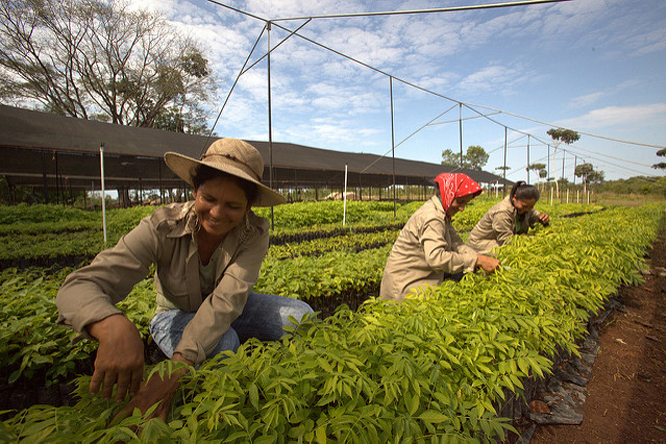What started out as a single post on credible individual offset options, has turned into three articles. No pun intended, but it is a jungle out there! The first article in this unintended series points to some great companies that are giving back to forests through their tree planting programs. In this past article, I focused on how to assess credibility in offset programs for individuals or small businesses that support forest carbon projects with your funding.
As I write this, I’m on hour fifteen of a 23-hour, three-leg trip to Canada, and it seems a perfect place to segue into my third article on the topic of individual offsets – with a focus on one of the biggest emission culprits that the western world partakes in – flying.

Air travel – the biggest culprit
If you are a regular flier, it will be one of the largest contributors to your carbon footprint. The airline industry has long been recognized for its heavy emissions, contributing 2.5% of global CO2 emissions in 2018. In fact the sector has developed CORSIA, its own offset mechanism for emissions that cannot be reduced through aviation operational improvements. In their latest newsletter, CORSIA has for the first time provided information on carbon market transactions of CORSIA-eligible emissions units. Not surprisingly, the industry has favored lower-priced renewable energy credits. The report indicates that the weighted average price of CORSIA eligible Forestry and Land Use units has increased by about 26% between 2020 and 2021.
If as a private citizen, or small company with a lot of air travel, you would like to offset the carbon footprint of your flying, there are easy options for you through several airlines. Below I highlight some of the bigger global airlines to show what they are doing and the voluntary passenger programs you can opt-in to. Some are more robust than others, and you’ll get a feeling for my take on this when you read on.
Which airlines are planting trees?
KLM
In their CO2ZERO program, KLM provides passengers with the option to offset the carbon emissions from their flight(s). This can be done at booking or before the flight. KLM invests these compensation funds into CO2 reduction projects certified with the Gold Standard. These projects also promote local sustainable development and contribute to at least two Sustainable Development Goals.
Since October 2017, KLM invests passenger compensation funding into a reforestation project in Panama, called the CO2OL Tropical Mix. This project transforms former pastures into new forests consisting of a mix of tree species and a variety of ecosystems. The project combines biodiversity conservation and ecosystem restoration with sustainable wood production (FSC-certified) and sustainable cocoa production (UTZ-certified). In addition to environmental benefits, the project also provides 150 jobs with a fixed income and good labour conditions, offering workers a basic education and training in sustainability and ecological alternatives. This ensures that local workers can improve their standard of living and hone their skills and knowledge.
You know how I feel about reporting as a measure of credibility, and KLM provides the facts and figures of their CO2ZERO program here.
British Airways
In British Airways’ BA Better World platform, customers can choose to offset their carbon footprint at the point of purchase on the website, before they take their flight, or they can make a one-off contribution via the BA / Leapfrog website. The airline is committed to reducing its net emissions by 50% by 2050.
BA has partnered with non-profit organization Pure Leapfrog, providing a carbon offsetting tool that gives passengers the freedom to make any flight carbon neutral. With respect to forests, they are currently supporting four carbon projects including one focused on forest protection in Cordillera, Peru (verified and registered with VERRA). The Cordillera project provides the following positive impacts:
- The project protects biodiversity and restores degraded land with agroforestry systems (cocoa & coffee) in the buffer zone relied upon by small farmers and local communities for their livelihoods,
- This forest provides food and water for more than 440 communities residing in the buffer zone,
- From avoided deforestation, it will reduce more than 22.1 million tonnes CO2 emissions through 2021,
- It is home to around 6,000 plant species, more than 80 large and medium sized mammals, around 180 fish species, and more than 600 bird species,
- The Park is the source of at least 45 watersheds that flow to the Huallaga and Ucayali rivers, two of the most important tributaries of Amazon River.
Other airline offset programs
Qatar
I was curious what the airlines of the large oil states would be doing in terms of offsetting, so first looked to Qatar. You can learn about their sustainability commitments here. Passengers can voluntarily offset carbon emissions associated with their journey at the point of booking. Qatar is committed to net zero carbon emissions by 2050. Qatar Airways’ carbon offset programme is built on a partnership with the International Air Transport Association’s (IATA) Carbon Offset Programme, delivering independently verified carbon reductions as well as wider environmental and social benefits. Instead of forest-related programs, Qatar indicates that contributions to the carbon offset program are currently invested in wind power in India. You can read more in their Sustainability Report.
Air Canada
I must say, I’m a little disappointment that my home country, which also happens to be the third largest forest nation globally, doesn’t contribute to forest projects. That’s not to say they aren’t doing anything. Air Canada is committed to reducing its net emissions by 50% by 2050. Through their Leave less program, passengers can choose to offset carbon emissions when booking flights. Air Canada’s approach is two-fold: Leave less through their operations — less carbon in the atmosphere, less waste in land and water, and less noise in communities. And Do more to address environmental issues — more collaboration and participation with industry partners, more involvement in communities and with employees and customers to have an even greater impact in their efforts. You can find out more in their report.
Who to watch?
Delta
Delta has suspended their current customer offset purchase program; whilst they develop new options for customers. In March 2020, Delta Air Lines committed $1 billion for the next 10 years towards its journey to mitigate all emissions from its global business going forward. The airline will invest in driving innovation, advancing clean air travel technologies, accelerating the reduction of carbon emissions and waste, and establishing new projects to mitigate the balance of emissions. Delta intends to achieve carbon neutrality by directly reducing emissions through fleet and operational efficiencies, and addressing remaining emissions through carbon offset project investments that maintain, protect and expand forests.
Two projects in Delta’s offset portfolio are Rimba Raya and Keo Seima, which protect forests through a community-driven conservation model involving local communities in Indonesia and Cambodia. These investments support the cost of running the programs and conserving more than half a million acres of forests, while avoiding the release of an average of five million metric tons of carbon to the atmosphere per year. All of Delta’s offset projects are independently audited against leading, third-party standards. You can read more in their ESG report.
Needs improvement
Emirates
Though Emirates commits to environmental stewardship and focusing their efforts on three areas: reducing emissions, consuming responsibly, and preserving wildlife and habitats, it is very difficult to find information on what they are actually doing. You can find out a little bit about their sustainability activities in their annual report, which is mostly centred around onboard food packaging, and reduced plastic. However, Emirates, I think you have some work to do to keep up with your peers…
Where to go next
I applaud the airlines taking great strides across their sustainability practices, from improved fuels to planting trees – and hope they keep up the good work. For many, however, significant changes are required. As I have mentioned in previous articles, restoring forests is one of the most efficient ways to remove emissions from the atmosphere, and with the existing infrastructure in forest carbon offset programs, in my view – this sector should be a no-brainer for airlines. As an individual, there are also options – you can either participate in one of the built-in schemes provided by the airlines directly, or if you’re flying with one of the airlines that are lagging behind in the forest offset department, you can choose your own – I provide some good options here.
If as an organization – airline or other, you would like to establish a forest carbon offset program, please reach out, and I can help you navigate the space and support you in designing your strategy.




